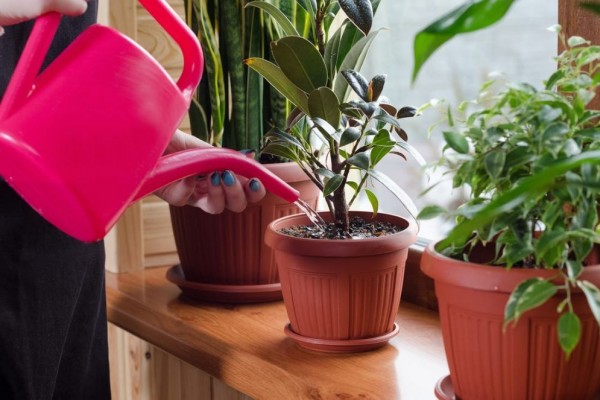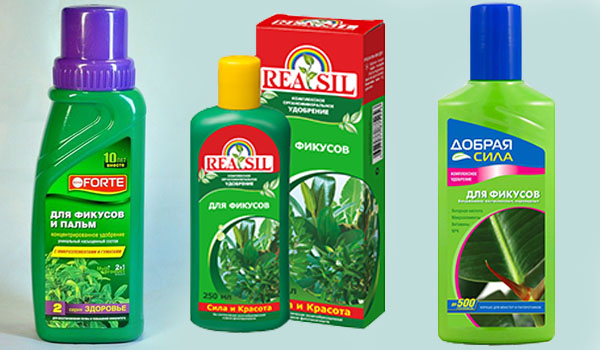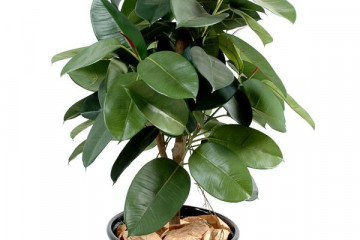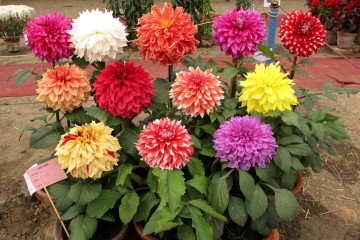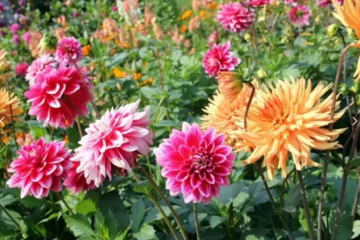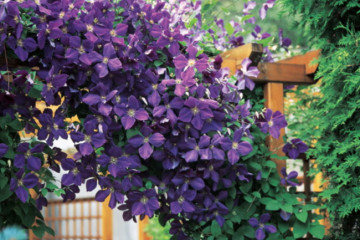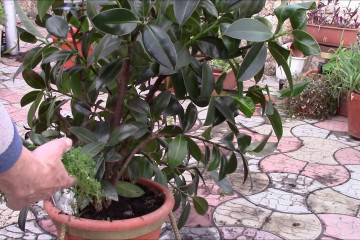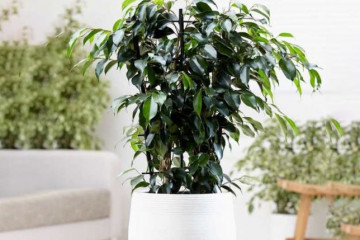How to water ficus for proper growth
Content:
The most popular indoor plants in the territory of the Russian Federation are deservedly referred to as ficus (ficus). It belongs to the group of evergreen deciduous crops. The flower is known for its unpretentiousness and ability to adapt in different places. The emergence of problems with the growth and development of a flower causes inexperienced growers to be interested in how to water the ficus correctly.
How often to water the ficus
Watering the ficus is carried out no more than 2 times a week. After the arrival of the cold season, there is a gradual decrease in the frequency of moistening the earth: from October it is reduced to weekly, and from the first winter month - to once every 10 days.
Water quality for ficus
Experienced growers prefer to use rainwater and melt snow in winter. If there is a natural spring near the house, then fresh water from the spring will be the best solution to the problem of irrigation due to its unique qualities.
Watering evergreen bushes with tap water is carried out according to the algorithm:
- After the liquid is set, it is boiled.
- Allow to cool - the total volume is divided into several vessels.
- After settling for 24 hours, the plant is irrigated.
To prevent the culture from falling into hibernation, top dressing is carried out: twice a month, from March to early September. The enrichment of the soil with liquid mineral compositions allows you to give the culture all the necessary substances, to activate its growth and development.
Ficus Benjamin is fed with the following solutions:
- Bonoy Forte;
- Good power;
- Multiflorum aqua;
- Flower happiness.
Signs of improper watering
Regardless of the unpretentiousness of the flower culture, excessive moisture in the earth affects it negatively. There are a number of signs that help to understand that a flower needs to change the irrigation system or requires better water:
- Stopping the growth of rubbery ficus - in addition to stopping development, is characterized by yellowing of the foliage on the lower part of the culture. The problem is associated with an impoverished soil and an insufficient amount of useful minerals. Otherwise - with a lack of fluid. Treatment consists in increasing the frequency of watering and the timely introduction of beneficial trace elements.
- Traces of rot on the root system, shoots or foliage - indicates excessive waterlogging and stagnation of moisture in the container. Ignoring the warning can lead to the development of a variety of fungal infections.
What is the risk of improper watering
Violation of irrigation requirements often leads to long-term disease of the crop or its death.With improper watering, the plant is attacked by insect pests. The wrong approach can be determined by the following criteria:
- loss of foliage, the formation of yellow spots on both sides of the leaf plates;
- the gradual appearance of a dull color and the disappearance of the standard bright green color of the aerial part.
Violation of the rules associated with inappropriate air humidity or season leads to the drying out of the plant. It is difficult for beginner growers to calculate a plan for irrigation and fertilization of the substrate, which is why they should focus on the generally accepted scheme. For experienced indoor crop lovers, the determination of changes in care is not difficult: according to the condition of the soil and the appearance of the ficus.
Features of the procedure in the cold and warm season
Experts divide the time of procedures into winter and summer time, especially due to changes in temperature and humidity levels.
Winter
The period starts from late autumn, when the first frosts come. At this moment, the plants slow down the rate of passage of juices along the trunk and foliage, they do not need the same amounts of nutrients, as in the hot season. To prevent the development of diseases and attacks of insect pests, water the crop twice a month.
In addition to the accepted irrigation of the soil, spraying of the green part and a contrast shower are often used. In winter, they are removed from the mandatory program - during implementation, an accidental injury to the foliage may occur.
Summer
With the arrival of spring heat and until the last warm days of autumn, the apartment has a low air humidity. Plants require frequent moistening of the substrate, a sufficient amount of minerals. In this period (especially in spring), growth and development are intensified - the culture needs an increase in the frequency of watering, at least once every seven days.
Ficus watering technique
Irrigating a plant is an easy and uncomplicated activity. How often do you need to water the ficus: before carrying out the procedure, you need to pay attention to some of the nuances:
- before manipulation, light depressions are made on the surface (up to 7 cm) - this approach will allow the liquid to be evenly distributed over the pot and not stagnate above the ground;
- after absorbing moisture, loosening is carried out - it helps to increase the flow of oxygen and nutrients to the root system;
- watering is carried out evenly, with constant monitoring of the result: if all the water goes into the sump, then it is carefully removed and the substrate continues to be moistened.
Standard irrigation methods are not difficult, even children can cope with them. For spraying crops, it is recommended to use a special liquid sprayer.
Air humidity and spraying
Humidity indicators change depending on the season: in summer they decrease, and in winter they increase. These nuances should be taken into account when calculating the substrate moistening scheme.
Ficuses belong to crops that prefer high humidity.To create a favorable environment, they need systematic irrigation, regular spraying and shower, with cleaning the sheet plates from accumulated dust and dirt.
At home, in offices and childcare facilities, they are installed to clean the premises from dust particles. Dirt accumulates on the foliage, and for the normal life of the plant, periodic washing of the green part with damp cotton pads is required.
Procedure if the plant is flooded or overdried
If overflows or insufficient moisture of the substrate are detected, experts advise to conduct a full check of the green part of the culture. This approach will help to timely detect a developing disease or colonization of insect pests. The root system is checked for rot - with a small amount of damage, they are removed.
If the plant is already affected by pests (spider mites, scale insects, aphids, mealybugs, thrips), then the primary treatment is mechanical cleaning of the foliage with a sponge and soapy water. Laundry soap is diluted in boiled and this solution is used to clean not only the leaf plates on both sides, but also the stem.
Restoring the state of a flower after a lack of fluid is easier than fighting diseases and pests. The earth in the container is carefully loosened, then water with the mineral composition diluted in it is slowly poured in. The procedure will allow not only to moisten the substrate, but also to nourish the culture with missing useful elements.
Ficuses are unpretentious indoor plants, which are completely easy to care for. If the basic instructions for irrigation and spraying are followed correctly, a healthy and beautiful flower with good immunity can be grown. The latter property helps him to fight most diseases and resist the attacks of parasitic insects.
